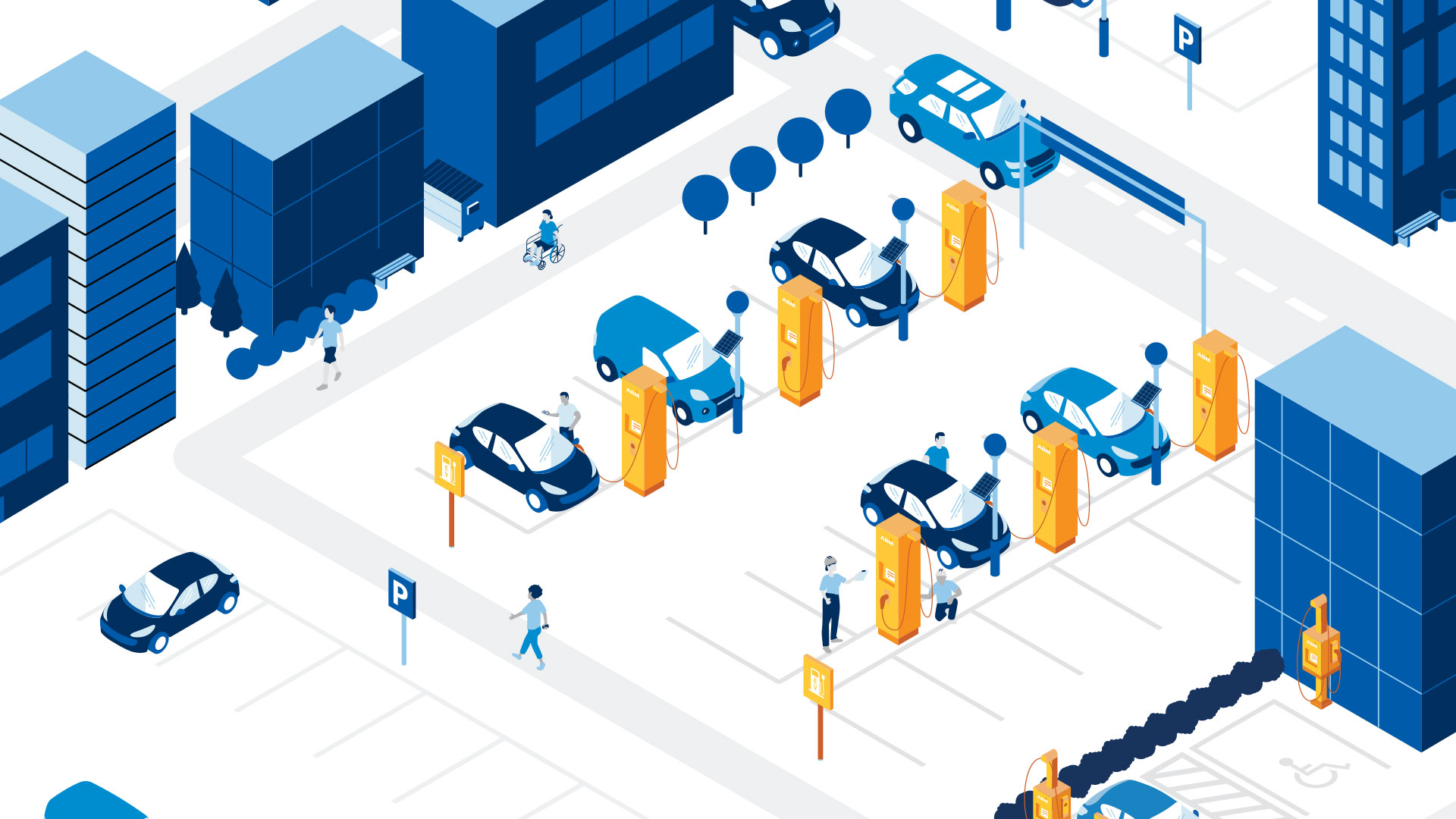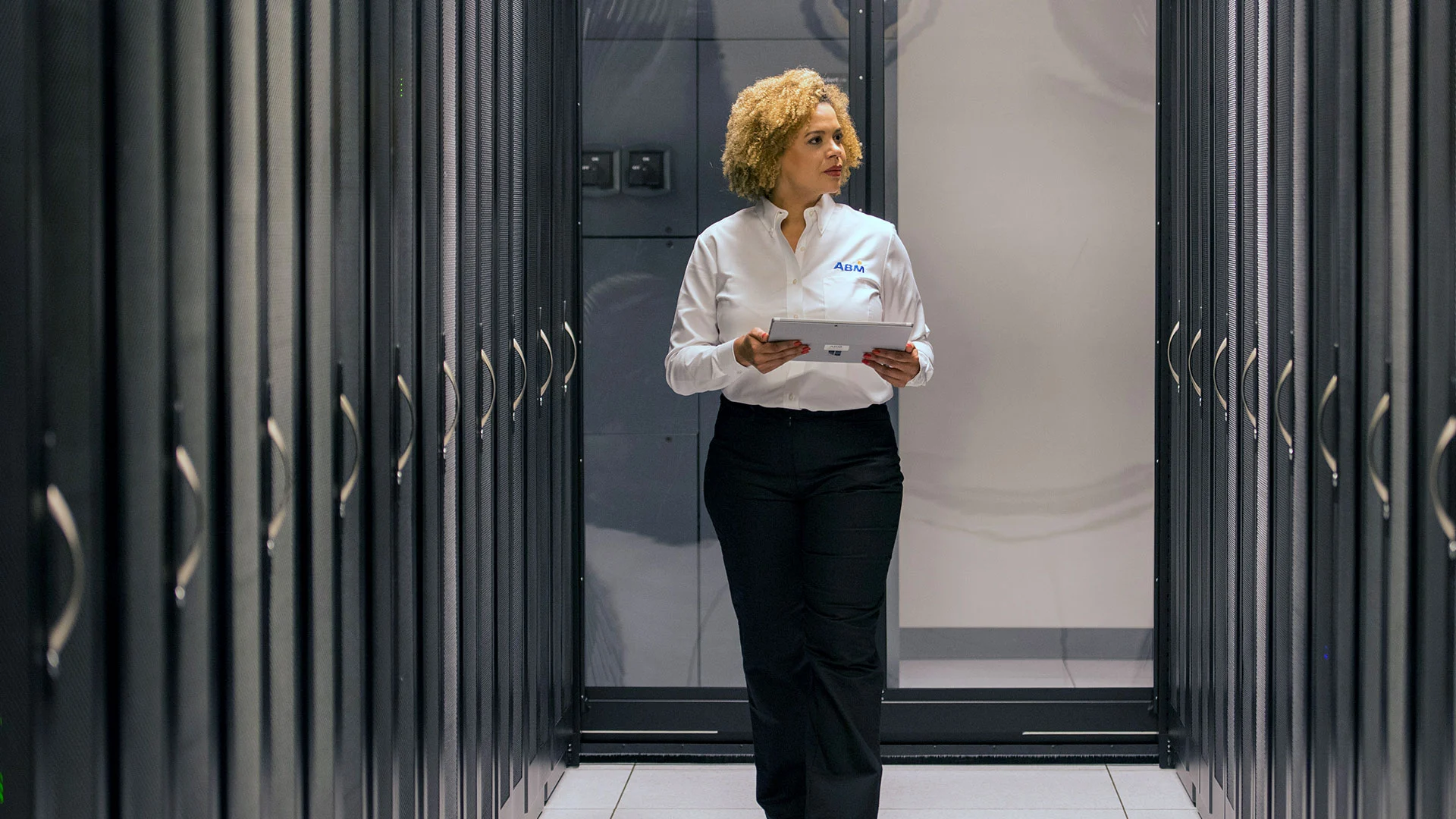ABM EV Charging Solutions Tech Guide
All the hard specs and data sheets you need to make EV a reality at your facility.
Where can I find technical information about ABM’s EV charger hardware, software, pricing and maintenance packages?
Answer: Right here, right now. ABM solutions make EV charging infrastructure a key feature of your facility. And you get all of the power—with none of the hassle.
ABM’s nationwide network of EV experts are uniquely positioned to implement custom EV charging solutions tailored to your facility’s needs. Whether you’re looking to start your first EV charging project or enhance your current EV charging offerings, ABM delivers turnkey EV solutions from a single, trusted source.
Read on for all the detailed EV answers you need. The tech specs behind our proven EV charging hardware and software. The detailed product data sheets to ensure it integrates with your facility. The financing and funding structures to help pay—and pay less—for it. And the preventative maintenance packages to keep it optimized and running for years to come. Like ABM, it’s all here to support you every step of the way.
How many EV charging stations, and which types, do I need?
Answer: It all depends on your goals, footprint and the investment you want to make in your facility’s EV infrastructure. But, no matter which way you choose to go, ABM can get you there.
As electric vehicles continue to evolve, ABM can help you lead the charge by right-sizing your EV assets and maximizing their useful service life. Here’s a quick overview of the three main types of EV charging technology.
No matter which type you need, ABM teams know how to design efficient, safe and dependable EV installations.
Level-1 Charging – Uses a standard 110/120-volt receptacle
- A simple cord with an adapter uses a standard AC wall plug on one end and the EV’s standard charging port on the other. This offers a slow “trickle” charge that is best suited for emergency charging, as it only provides a limited extension of the vehicle’s range over a long-duration charge.
Level-2 Charging – Uses the 208/240-volt SAE J1772 port for faster charging
- It can be anywhere from 3.5 to 10 times the speed of a Level-1 charger (4-6 hours to fully charge a small EV).
- With their relatively low cost and moderate electrical infrastructure demands, Level-2 stations have become both the global industry standard and the practical standard for the majority of sites.
- Keen eyes will notice a growing number of charging stations popping up in key metro areas at retailers, public parking sites, office buildings, parking structures, and residences.
Level-3 Charging (DC Fast Charging) – 480 volt, very fast charging for automobiles equipped with the Fast Charging option
- DC Fast Charging can charge a small EV to 80% of its capacity in less than 30 minutes.
- Unlike Level-2, where there is one global standard, Level-3 chargers have at least three “competing standards.” These standards have regional roots, yet all are battling for global dominance. It will take some time to see if the industry moves to a single option or if we live with three for the foreseeable future.
Meeting high-voltage requirements
These days, it’s become common to see chargers with more residential specifications, such as 240V, 20A. Now, 40A circuits are needed for AC charging.
For DC fast charging, 50kW and 400V have been the norm. And that’s poised to increase to 800V at 350kW of charging. Meanwhile, the market is already looking ahead to 1,000kW (1MW) and 1,200V.
Many commercial electricians are not required to work with voltages higher than 480V phase-to-phase, and many work mostly with AC power. DC fast charging means more technicians will need to be trained to work on DC at the 1,000V (soon to be 1,200V) level.
To operate in this increasingly charged environment, ABM has fully trained its personnel across the board—not just techs. Our field electricians all possess the appropriate skills and PPE for handling higher voltage equipment. In addition, our estimators, designers, and project managers are all well versed in the increased power requirements and working practices required.
What are the right EV chargers to meet my needs and demand?
Answer: ABM provides and installs world-class charging technology. We’ll work with you, your goals and your facility to implement the best possible EV charging hardware.
From entry-level charging solutions to the latest smart EV Level-2 charging stations and Level-3 heavy duty fleet chargers, our options are perfect for any location, including hotels, offices, entertainment venues, residential parking lots and more.
The advantages of ABM EV solutions
- Fast time-to-market
- Low development costs
- Best-in-class reliability
- Comprehensive product support
Got EV questions? Get EV answers.
Find out exactly what ABM can do for you. Speak with one of our EV experts today.
Just ask ABM—the leading commercial installer of EV chargers in the U.S.





